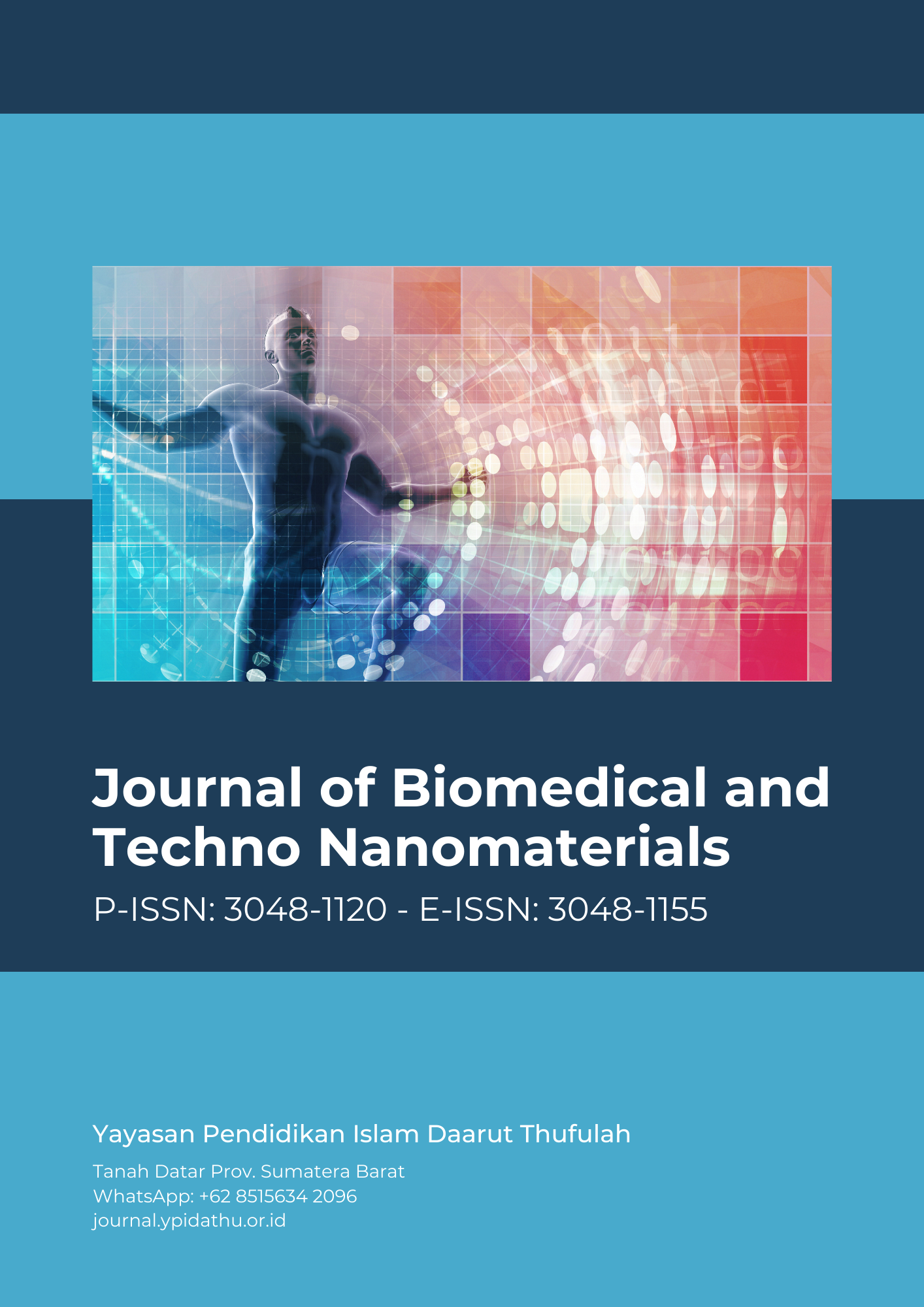Abstract
Structural variations in nucleic acids play a crucial role in genetic diversity and disease susceptibility among different populations. Understanding these variations provides valuable insights into human evolution, genetic predisposition to diseases, and responses to treatments. A comparative study of structural variations across populations is essential to identify population-specific genetic patterns. This study aims to analyze structural variations in nucleic acids across different populations, identify key differences among them, and understand the biological and medical implications of these variations. The ultimate goal is to provide comprehensive data that can be used for further research in population genetics and public health. The study employed a comparative approach using bioinformatics analysis of genomic data from various populations worldwide. Genomic data were obtained from public genomic databases and analyzed to identify structural variations, including deletions, duplications, inversions, and translocations. Next-Generation Sequencing (NGS) techniques were utilized to ensure high accuracy and resolution in identifying structural variations. The results revealed significant differences in structural variations among the populations studied. Certain structural variations were found to be more prevalent in specific populations, indicating natural selection and local adaptation. Additionally, variations associated with genetic diseases showed varying frequencies across populations. This study highlights the importance of structural variations in nucleic acids as a determinant of genetic diversity among different populations. The findings contribute valuable insights into human evolution and have significant implications for health, particularly in developing personalized medical strategies. Further research is needed to explore the impact of these structural variations on biological functions and human health.
Full text article
References
Arrangoiz, R. (2016). Melanoma Review: Epidemiology, Risk Factors, Diagnosis and Staging. Journal of Cancer Treatment and Research, 4(1), 1. https://doi.org/10.11648/j.jctr.20160401.11
Chandra, R. (2020). Gambaran Klinis dan Patologi Melanoma Maligna Kutaneus. Cermin Dunia Kedokteran, 47(11), 673. https://doi.org/10.55175/cdk.v47i11.1193
Houghton, A. N., Coit, D. G., Daud, A., Dilawari, R. A., DiMaio, D., Gollob, J. A., Haas, N. B., Halpern, A., Johnson, T. M., Kashani-Sabet, M., Kraybill, W. G., Lange, J. R., Martini, M., Ross, M. I., Samlowski, W. E., Sener, S. F., Tanabe, K. K., Thompson, J. A., Trisal, V., … Walker, M. J. (2006). Melanoma: Clinical practice guidelines in oncologyTM. JNCCN Journal of the National Comprehensive Cancer Network, 4(7), 666–684. https://doi.org/10.6004/jnccn.2006.0057
Just a moment... (n.d.). Retrieved May 12, 2024, from https://www.thelancet.com/journals/lancet/article/piiS0140-6736(13)60802-8/fulltext
Kachroo, S., & Gowder, S. J. T. (2016). Gene therapy: An overview. Gene Technology, 5(1), 1–14.
Little, J. W. (2006). Melanoma: Etiology, treatment, and dental implications. General Dentistry, 54(1), 61–66; quiz, 67.
Lnterferon?? gene therapy for cancer: Basic research to clinical application—Yoshida—2004—Cancer Science—Wiley Online Library. (n.d.). Retrieved May 12, 2024, from https://onlinelibrary.wiley.com/doi/abs/10.1111/j.1349-7006.2004.tb02194.x
McCourt, C., Dolan, O., & Gormley, G. (2014). Malignant Melanoma: A Pictorial Review. The Ulster Medical Journal, 83(2), 103–110.
Wargasetia, T. L. (2005). Terapi Gen pada Penyakit Kanker. 4(2).
Widyastuti, D. A. (2017). TERAPI GEN: DARI BIOTEKNOLOGI UNTUK KESEHATAN. Al-Kauniyah: Jurnal Biologi, 10(1), 59–72. https://doi.org/10.15408/kauniyah.v10i1.4864
Yu, M. (1996a). Advances in Cancer Gene Therapy. McGill Journal of Medicine, 2(2), Article 2. https://doi.org/10.26443/mjm.v2i2.702
(Malignant Melanoma: Skin Cancer?Diagnosis, Prevention, and Treatment - Critical ReviewsTM in Eukaryotic Gene Expression, Volume 30, 2020, Issue 4 - Begell House Digital Library, n.d.)
Lerner, B. A., Stewart, L. A., Horowitz, D. P., & Carvajal, R. D. (2017). Mucosal Melanoma: new insights and therapeutic options for a unique and aggressive disease. Oncology (08909091), 31(11).
Eyquem, J., Mansilla-Soto, J., Giavridis, T., Van Der Stegen, S. J. C., Hamieh, M., Cunanan, K. M., Odak, A., Gönen, M., & Sadelain, M. (2017). Targeting a CAR to the TRAC locus with CRISPR/Cas9 enhances tumour rejection. Nature, 543(7643), 113–117. https://doi.org/10.1038/nature21405
Gloria, M. (2023, Juli 20). Customizing CAR-T cell-based applications using the CRISPR-Cas9 system | IDT. Integrated DNA Technologies. https://sg.idtdna.com/pages/education/decoded/article/customizing-car-t-cells-using-the-crispr-cas9-system
Parambi, D. G. T., Alharbi, K. S., Kumar, R., Harilal, S., Batiha, G. E.-S., Cruz-Martins, N., Magdy, O., Musa, A., Panda, D. S., & Mathew, B. (2022). Gene Therapy Approach with an Emphasis on Growth Factors: Theoretical and Clinical Outcomes in Neurodegenerative Diseases. Molecular Neurobiology, 59(1), 191–233. https://doi.org/10.1007/s12035-021-02555-y
Ramsden, D. A., & Nussenzweig, A. (2021). Mechanisms driving chromosomal translocations: Lost in time and space. Oncogene, 40(25), 4263–4270. https://doi.org/10.1038/s41388-021-01856-9
Rupp, L. J., Schumann, K., Roybal, K. T., Gate, R. E., Ye, C. J., Lim, W. A., & Marson, A. (2017). CRISPR/Cas9-mediated PD-1 disruption enhances anti-tumor efficacy of human chimeric antigen receptor T cells. Scientific Reports, 7(1), 737. https://doi.org/10.1038/s41598-017-00462-8
Wargasetia, T. L. (2005). Terapi Gen pada Penyakit Kanker. 4(2).
Zhang, F., Wen, Y., & Guo, X. (2014). CRISPR/Cas9 for genome editing: Progress, implications and challenges. Human Molecular Genetics, 23(R1), R40-46. https://doi.org/10.1093/hmg/ddu125
Authors
Copyright (c) 2024 Ziming Sahil

This work is licensed under a Creative Commons Attribution-ShareAlike 4.0 International License.

